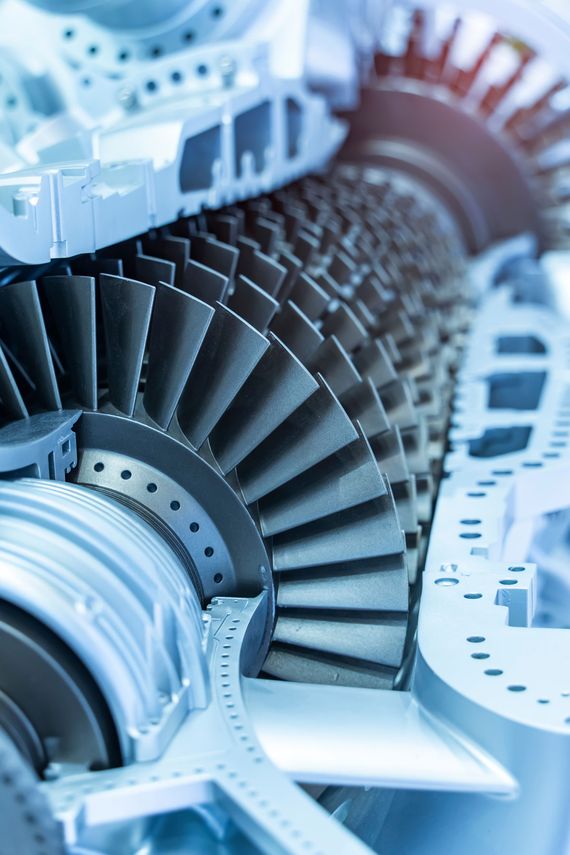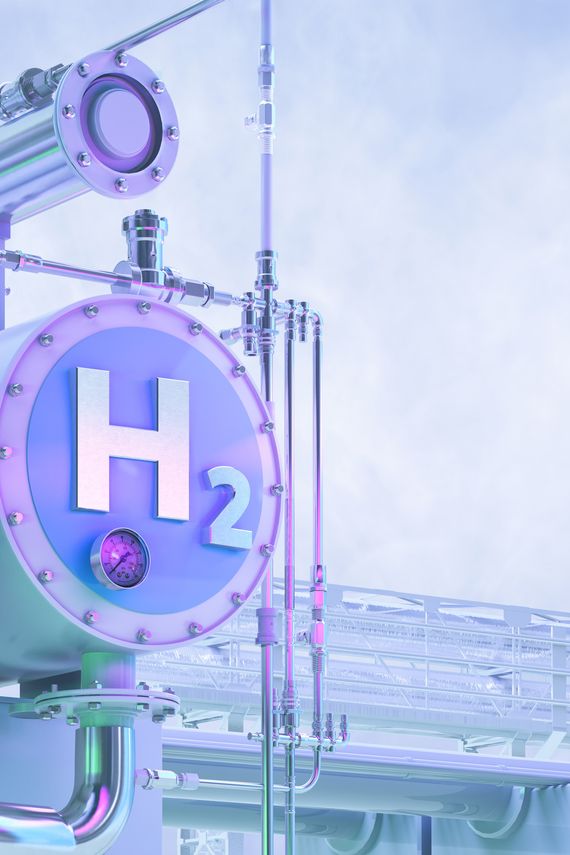Thinking ahead with hydrogen
Hydrogen will help us replace fossil fuels in power plants with climate-friendly alternatives. These future power plants combine security of supply and flexibility in energy supply with the necessary reduction of greenhouse gases and protection of the climate. At LEAG, we are working today on the power plants for tomorrow - with H2 readiness and pure hydrogen power generation.
Innovative energy sites for a CO2-free future
Industry and households depend on a 24/7 secure supply of electricity and heat. In an energy system geared towards renewables, we need technologies that secure and stabilise the fluctuating feed-in from wind and solar power plants. That is why we at LEAG want to build further large-scale energy storage facilities and controllable backup capacities in addition to our large-scale batteries.
We are planning hydrogen-ready gas-fired power plants (H2-ready) at existing power plant sites. We also want to combine H2-readiness and other technologies into innovative storage and hydrogen power plants. Our sites are already well developed for this. They have the necessary electricity grid connections, modern infrastructures and digital power plant control systems. Moreover, they are located in the immediate vicinity of the growing renewable portfolio of our GigawattFactory. Electricity from the sun and wind is used to produce green hydrogen through electrolysis. In the future, it can replace fossil fuels in our H2-ready and pure H2 power plants. The clear goal: CO2-free energy that can be relied on around the clock.
Central prerequisites for the new generation of power plants to take shape are:
Creation and adaptations of the gas and future hydrogen networks
Market and investment incentives
Funding opportunities
The projects we are pursuing today could be implemented as early as the second half of the 2020s. By 2030 or 2040 we are planning a fleet of highly flexible power plants with an installed capacity of around 3 to 4.5 gigawatts. That's how much power there is in about seven lignite-fired power plant units today.
H2-ready gas-fired power plants
A bridging technology from today for tomorrow: modern, hydrogen-capable plants that are initially operated with natural gas are gradually converted to hydrogen-based operation. The more natural gas that can be replaced, the lower the emissions will be while maintaining a high level of supply security. We are currently planning three H2 ready gas-fired power plants in Schwarze Pumpe, Lippendorf and Leipheim.
In Schwarze Pumpe on the Brandenburg-Saxony border near Spremberg and in Lippendorf near Leipzig, we are working to realise two H2 ready power plants with up to 900 MW of installed capacity. We submitted the applications for approval in December 2022. Both plants are to be built as a highly efficient combination of H2 ready gas turbine and steam turbine (CCGT - combined cycle gas turbine power plants).
In addition, we are planning a H2 ready power plant with an installed capacity of 350 to 550 MW for the Leipheim site near Ulm in Bavaria. A highly flexible H2 ready gas turbine is to be built at this site, which can be sequentially expanded into a highly efficient H2 ready combined cycle power plant (CCGT). In Leipheim, we have already commissioned a 300 MW gas-fired power plant that serves the grid operator Amprion to stabilise the electricity grid.
Innovative storage power plant
The innovative storage power plant (ISPP) combines several technologies for the generation, conversion and storage of energy. With it, we want to transform Jänschwalde (Brandenburg, near Peitz) into a highly flexible energy location. The innovative storage power plant should make us less dependent on fossil fuels and, in the long term, be able to be operated in a climate-neutral manner.
The essential components of the Jänschwalde ISPP include hydrogen production from renewably generated electricity by means of electrolysis. Additional flexibility is provided by a hydrogen storage facility and a solid-state heat storage facility powered by renewably generated electricity. Both feed an H2-capable combined cycle gas turbine plant. Through this linkage, we use renewable heat and green hydrogen to generate electricity in addition to natural gas. This allows us to store surplus energy from the sun and wind and use it as needed, regardless of the time of day or weather. In addition, the green hydrogen can be provided for industry and mobility as part of sector coupling.
Innovative Jänschwalde storage power plant (ISPP)
- Highly efficient H2-capable combined cycle plant (around 900 MW installed capacity)
- Thermal energy storage with electric heater for storing electricity from the sun and wind (around 1,000 MWh storage capacity)
- Generation, storage and conversion of green hydrogen
- Provision and marketing of green hydrogen for industry and mobility
- Approval procedure started (scoping date in July 2022, application submission in May 2023)
H2UB as a green flexibility power plant
In addition to hydrogen-capable gas turbines, the first power plants of the future are to be built that can completely dispense with fossil fuels as soon as they are commissioned - our H2UBs (networked hydrogen and storage sites). The core elements of these modularly expandable flexibility power plants are large-scale electricity storage and hydrogen capacities.
In Boxberg in the Free State of Saxony, we are planning the first flexibility power plant of its kind. From the very beginning, it will run exclusively on green electricity and green hydrogen. With the electrolysis plant of the H2UB Boxberg, we want to convert electricity surpluses into green hydrogen during times of strong sun and wind. The green hydrogen will be stored at the site. In addition to being fed back into the grid, it can also be used for heat supply, mobility or industry (sector coupling).
H2UB Boxberg
- H2 production via electrolysis from electricity surpluses from renewable energies
- H2 storage
- modularly expandable H2 electricity generation, complete abandonment of fossil energy sources
- Large-scale electricity storage

